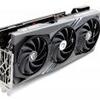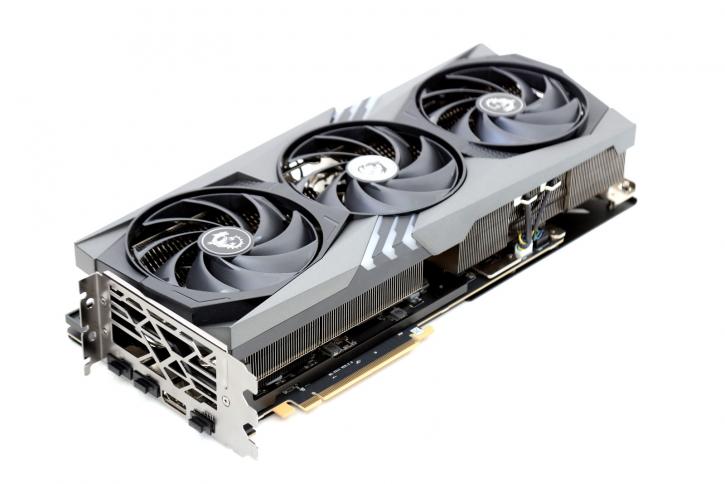Introduction
MSI GeForce RTX 4080 Gaming X TRIO review
With the release of the NVIDIA GeForce RTX 4080, we are here with a comprehensive review of another AIB RTX 4080 graphics card. The MSI GeForce RTX 4080 16GB GAMING X TRIO which is priced at $1309.99 MSRP. MSI's TRI FROZR 3 thermal solution, a specialised video card layout, and a factory overclock make the MSI GeForce RTX 4080 16GB GAMING X TRIO an excellent choice for competitive gamers and overclockers.
The acronym TRIO refers to the triple-fan solution included in this highly individualised item. The goal was to achieve high performance with minimal noise, and they succeeded admirably. And I will go ahead and spoil the ending: this card is SILENT once again. It has been upgraded with more memory for the graphics card (16 GB), faster clocks and TGP, and offers superior cooling. MSI sells a GeForce RTX 4080 Gaming X Trio edition graphics card that is made well, very well. For a product in this enthusiast class, the card's large power distribution is surprisingly well-tuned and runs quietly. Plus, it has 16 GB of the most potent GDDR6X RAM money can buy. The new graphics card provides excellent performance at all fronts, more extensive raytracing features, and DLSS 3.0 thanks to upgraded Tensor cores. While we all had a reasonably dull year in terms of technology, 2022 is loaded with new releases. Among them were NVIDIA's ADA GPU architecture graphics cards for the consumer market. The company has unveiled its new GPU design for next-generation gaming PCs. In the short term, two or three variants of GPUs are expected in the first launch wave, each one will outperform the Ampere 3000 series somehow. NVIDIA's RTX 4000 GPUs will provide impressive performance, but next-gen graphics cards may have to contend with alternatives like AMD's rDNA3 and Intel's Arc Alchemist. Where GeForce RTX 4090 is Nvidia's flagship model in the new series, the GeForce RTX 4080 16GB takes a step down. This product is configured with 9728 shading cores offering 49 Shader-TFLOPS of power for traditional rasterized graphics rendering. Add to that 304 Fourth Generation Tensor Cores and 76 Third Generation raytracing cores and you're bound to get some serious performance. NVIDIA claims the GeForce RTX 4080 is twice as fast as the GeForce 3080 Ti, but it uses almost 10% less power and costs the same as the GeForce 3080 Ti, which is $1199. As with all GeForce RTX 40 Series GPUs, the RTX 4080 is full of Ada innovations. These include Shader Execution Reordering (SER), the new RT core engines, and DLSS 3, which will give upcoming RTX games like Racer RTX and Cyberpunk 2077 with RT: Overdrive mode up to three times the performance of the RTX 3080 Ti. The RTX 4080 is great for making difficult content and gives the best gaming performance. Creators will also benefit from the extra memory when rendering larger scenes, editing 12K RAW video, and using multiple apps simultaneously. Experience feature-rich RTX acceleration in the best creative apps, world-class NVIDIA Studio drivers designed for maximum stability, and a suite of exclusive tools that use the power of RTX for AI-assisted creative workflows. Initially, NVIDIA wanted to release two distinct GeForce RTX 4080 versions. A GeForce RTX 4080 12GB with GDDR6X RAM. Nvidia also announced a 16GB model of the RTX 4080. Due to market reception and confusion, NVIDIA decided to remove that 12GB version from its deck of cards (likely, it'll end up being a 4070 (Ti)). The card's shader engine clock frequency is 2.21 GHz, with a boost clock of 2.51 GHz. This card has a 256-bit memory bus and a relatively okay tbp (total board power) of 320W.
MSI is back with their ravishing GAMING X TRIO series. It has 9728 Shader cores turned on and 16 GB of brand-new GDDR6X graphics memory. MSI provided the card with a semi-passive design; once the GPU warms up, the three fans begin to spin and cool. The card has been made much more robust and has a stand to keep it from sagging. The GAMING TRIO is also available in a non-X configuration, which has a lower factory overclock but is otherwise identical. MSI's SUPRIM and SUPRIM X models, which sit above the GAMING X TRIO, feature the company's most extreme factory overclocks and custom enthusiast builds. The VENTUS 3X and VENTUS 3X OC are less powerful and feature a less flashy design than the GAMING X TRIO. Ada Lovelace architecture on TSMC 4N NVIDIA custom process powers the GeForce RTX 4080, which features 9,728 CUDA Cores, 304 4th Gen Tensor Cores, 76 3rd Gen RT Cores, 304 Texture Units, and 112 ROPs. The maximum Boost Clock speed is 2505MHz. The 716.8GB/s memory bandwidth comes from its 16GB of 22.4GHz GDDR6X memory on a 256-bit memory bus. TGP means 320 watts. It has two BIOS settings: one for gaming performance and another for being quiet. These BIOS settings give the same performance to within 1%, but at different temperatures and noise levels because. To give you an idea, we only measure 32 DBa when we test acoustics. At 2595 MHz, this card only has a slightly faster clock frequency. Tweaked, we see it hit over 3.0 GHz. The memory works at a speed of around 22.4 Gbps. Because of this, the cooling is even better, but the radiator is thicker, and the vapour chamber cooling is not as good. With these numbers and other high-end parts in mind, please use this graphics card with at least a 750 Watt PSU. This newborn is big. It weighs close to 2kg and is 336 x 140 x 71mm. But, hey, make your own decision and let us start this review, shall we?


